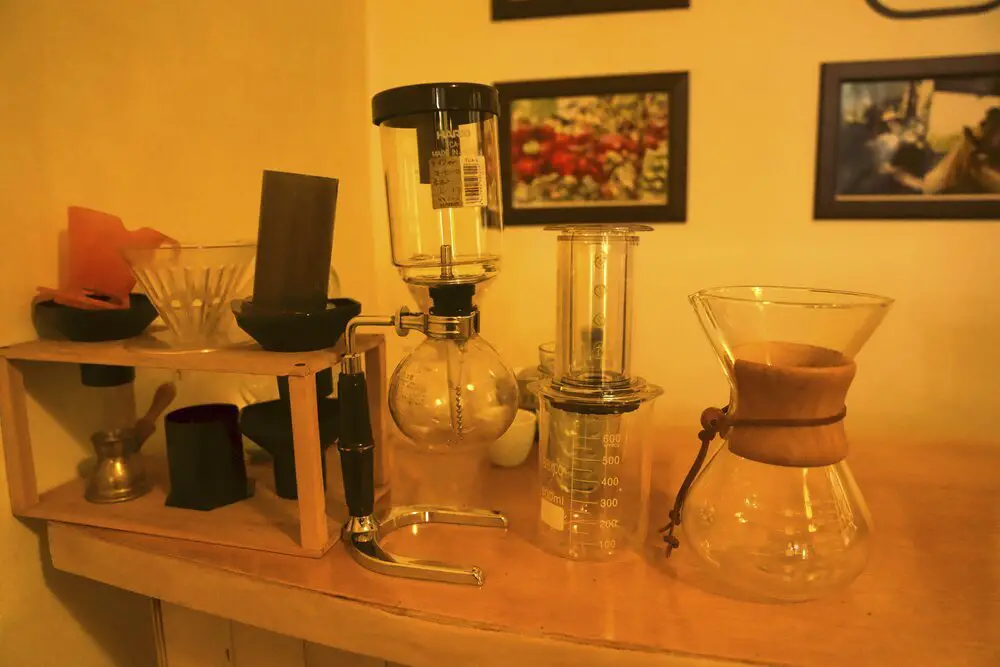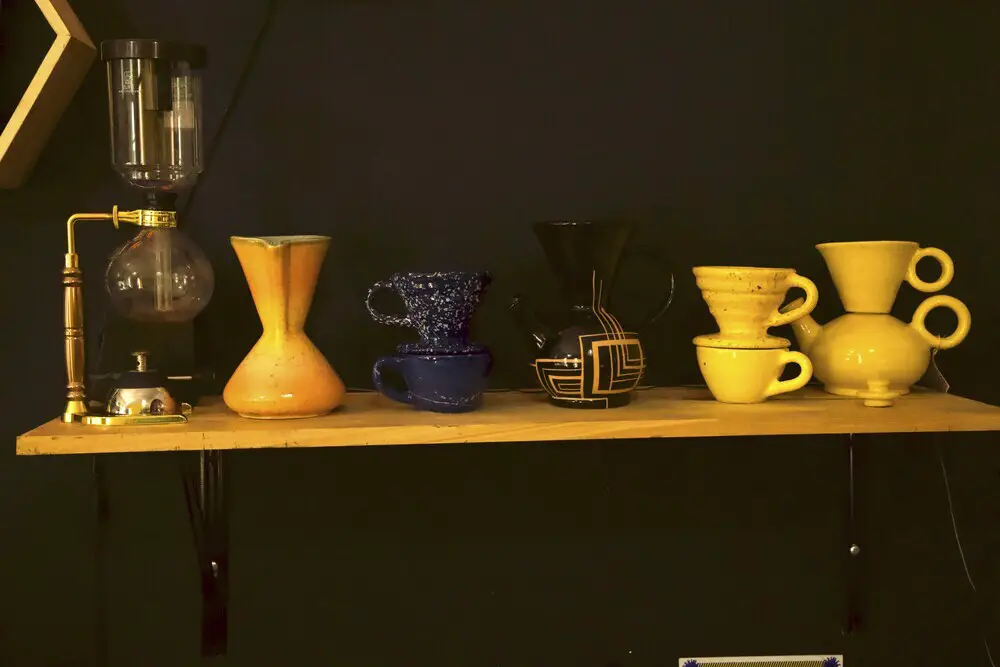In this blog you will learn everything you need to know about manual coffee makers.
Table of Contents
What are manual coffee makers?
Manual coffee makers are coffee makers where the user controls the brewing process, as opposed to automatic or semi-automatic coffee makers. With manual coffee makers, the user has full control over every step of the brewing process, including coffee grind, water temperature, brew timing, and brew pressure.
There are several types of manual coffee makers, including:
- Manual espresso machines: This type of coffee maker requires the user to grind the coffee themselves, pour it into the portafilter, manually start the brewing process, and monitor the brewing pressure. They offer a high level of control over the espresso brewing process and allow the user to customize the taste and strength of the espresso.
- Manual Pour-Over Coffee Makers: With pour-over coffee makers, such as the Hario V60 or the Chemex, the user manually pours the hot water over the ground coffee. Slow and precise pouring allows the user to control the contact timing, amount of water and brewing speed to affect the aroma and flavor of the coffee.
- Manual French Press: A French press is a manual coffee maker in which the user pours hot water over coffee grounds and then depresses the plunger to separate the coffee grounds from the finished coffee. The brewing time and the pressing of the plunger are done manually, which makes it possible to adjust the strength and taste of the coffee.
Manual coffee makers often require some practice and experimentation to achieve the optimal brewing process. They are appreciated by coffee lovers who like to control the brewing process and have the ability to adjust different variables to achieve the desired coffee taste.
Manual coffee machines – A journey through history
The origins of manual coffee machines go back more than two centuries. Despite the plethora of models that can be found on the market today – from simple jugs with fabric filters, to streamlined coffee makers that work with paper filters, to more industrial and more modern machines – the central and fundamental idea of coffee makers as conceived in ancient times has remained practically the same since its inception.
The first manual coffee machines
The first manual coffee makers were invented in the 19th century when people started using filtering techniques to brew coffee. This included, for example, boiling the beans in water and straining the mixture through a cloth or paper filter.
After several decades of migration and colonization, coffee seeds made their way around the world, from Africa to Asia, then to Europe and finally to the Americas. This is how the great societies and the aristocrats of the great houses fell in love with this drink. Over time and due to the good taste of the coffee-based beverage, the quality of the coffee was improved and a manual coffee maker was invented that revolutionized, simplified and accelerated the production of coffee.
The original design of the coffee maker
It is based on various theories, but the one with the greatest influence and truthfulness is that of the Earl of Rumford, also known as Benjamin Thompson, a British-born and American-raised physicist; Since its presentation, Thompson’s invention has been widely recognized as the starting point for the future development of modern coffee machines.
In the years that followed, various variants of coffee machines were developed, such as B. that of the Italian Angelo Moriondo, who presented his prototype at the General Exhibition in Turin in 1884, but the drink prepared with this machine did not have the desired consistency and the coffees were a bit burnt.
It was only in 1901 that inventor Luigi Bezzera improved Moriondo ‘s model and registered it in his name on December 19 of the same year. This innovation made it possible to prepare excellent quality coffee, and in 1905 Desiderio Pavoni bought Bezzera ‘s patent and founded the company “La Pavoni “, beginning the worldwide commercialization of the coffee maker.
Types of manual coffee makers
The manual coffee makers require skill and practice to brew the perfect cup. There are different types, each with their own brewing method and features, making them an interesting option for coffee lovers looking for a customized, high-quality experience.
Manual espresso machine
The origin of the manual espresso machine goes back to the mid-19th century in Italy, where people experimented with different methods of preparing coffee. In 1901, Italian inventor Luigi Bezzera patented the first prototype of an espresso machine that used steam to force hot water through ground coffee to produce a concentrated and flavorful drink.
Unlike automatic or semi-automatic coffee machines, manual espresso machines, also known as manual espresso machines, require skill and knowledge to operate,
The barista has to manually control the process from grinding the coffee to extracting the espresso, allowing for better customization of the process and higher quality of the finished drink.
Italian coffee maker
Unlike manual espresso machines, Italian coffee makers are a bit simpler and less expensive as they don’t require as much skill and knowledge from the user. They are very popular in Italy and other countries around the world, especially in Latin America, as they are easy to use and hygienic, making them an excellent choice for those who want to enjoy a quality coffee at home without investing in an expensive espresso machine.
Drip or filter coffee machine
While they don’t achieve the same flavor intensity and concentration as the manual espresso machine or French press, drip or drip coffee machines are highly valued for their ability to produce a smooth and balanced coffee. They also allow the user to better customize the coffee, since it is very easy to adjust the amount of coffee and the amount of water to achieve the desired intensity and taste.
Siphon coffee maker
These coffee makers have a lower chamber where the water is poured and an upper chamber where the ground coffee is poured. As with the other machines, the water in the lower chamber is heated until the steam pushes the water up where it mixes with the ground coffee, and after a few minutes the heat is removed and the coffee is filtered through a cloth or metal filter into the lower chamber.
Cold Brew coffee maker
Cold brew coffee is popular with those who prefer a less bitter and less acidic taste than traditional coffee. Because cold water is used, this type of coffee is milder and doesn’t have the same caffeine content as hot coffee. The brewing process consists of filling a container with cold water, adding ground coffee and letting the mixture steep for several hours, usually between 12 and 24 hours. Once the mixture is sufficiently infused, the ground coffee is filtered out and the resulting liquid is obtained, which can be enjoyed hot or cold.
How are manual coffee makers used?
Manual coffee makers might seem a bit intimidating at first, as they don’t have the usual settings of full-automatic machines or the ready-made drinks of capsule machines, but learning how to use them is quite easy. Here are some of the basic steps to using a manual coffee maker that will work for most people:
Grind the coffee
If you want to experience the full pleasure, you must first grind the coffee. It must be ground to the correct size for the machine to be used, as an incorrect size could affect the quality of the brew.
Prepare the machine
After grinding the coffee, it is important to prime the machine. It must be clean and ready to use, and the filters and containers must be free of residue as this can affect the taste. A useful tip is to fill the water tank with fresh water and turn on the machine to heat it up.
Prepare ground coffee
Once the machine is hot, pour the ground coffee into the machine’s filter holder, making sure it’s not clumped or unevenly filled.
Choose the pressure
If your manual coffee maker has the ability to adjust the pressure, set it according to the specifications of the coffee used and the instructions for use.
Prepare your coffee
Place a cup or carafe under the filter holder and start extracting the coffee. Depending on the type of manual coffee maker you use, there are different options to control the extraction time and the amount of coffee extracted.
Prepare your favorite cup
Once the coffee is ready, you can look at and enjoy your favorite cup. Be sure to clean the machine after use to keep it in good condition.
Conclusion
In summary, manual coffee makers are an excellent choice for coffee lovers who want to experiment and make their own brew at home. With a little practice and patience, anyone can learn to make delicious, artisanal coffee with these machines. From choosing the right machine to preparing the beans and frothing the milk, we hope our tips and tricks have helped you improve your coffee experience. Enjoy a delicious cup of homemade coffee!


